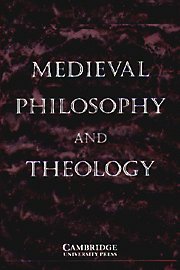Article contents
Aquinas on Attributes
Published online by Cambridge University Press: 01 March 2003
Extract
Aquinas' theory of attributes is one of the most obscure, controversial parts of his thought. There is no agreement even on so basic a matter as where he falls in the standard scheme of classifying such theories: to Copleston, he is a resemblance-nominalist; to Armstrong, a “concept nominalist”; to Edwards and Spade, “almost as strong a realist as Duns Scotus”; to Gracia, Pannier, and Sullivan, neither realist nor nominalist; to Hamlyn, the Middle Ages' “prime exponent of realism,” although his theory adds elements of nominalism and “conceptualism”; to Wolterstorff, just inconsistent. I now set out Aquinas' view and try to answer the vexed question of how to classify it.
- Type
- Research Article
- Information
- Copyright
- © 2004 Cambridge University Press
- 4
- Cited by




